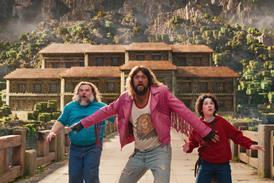The Mill’s CEO Robin Shenfield and Ben Hampshire, managing director of their LA office, explain how they continued service during Sandy.
Hurricane Sandy put a halt to film and TV production in New York City this week. With part of the Manhattan still without power, the full effect of the storm on the film industry may not be known for days.
The New York Mayor’s Office of Film, Theatre & Broadcasting has only just started reissuing permits. It will issue permits only for production shooting in stages until Nov 4, then on Nov 5, it will issue outdoor permits on a case by case basis, but is still prohibiting outdoor shooting in areas severely affected by the storm. Said the office in a statement: “New York crews are known for their ‘can do’ attitudes, and the City offers a wealth of location options for productions. We’re confident that the TV shows and feature films that call New York City home will take this temporary adjustment in stride.”
The overall effect of the storm on the industry will take weeks to determine. But immediate repercussions are already being felt. From slow attendance at the American Film Market, which started last week in LA, to fears for the safety of the huge sets built for Darren Aronofsky’s Biblical flood epic Noah, located on Oyster Bay on Long Island Sound, in the path of the storm.
The devastation left by Sandy, and the ongoing fallout, puts into sharp focus the interconnected nature of the global media industry: a flood in India can affect productions in London; wildfires in Australia can directly threaten work for clients in LA. Facilities and productions are increasingly having to face the challenge of how to continue to provide service in the face of extreme weather conditions.
Visual effects house The Mill, with studios in New York [pictured], London and LA, is just one facility, with clients around the world, whose New York studio had to go completely offline. Power loss was total once the storm hit and even as power came back on in other parts or New York, lower Manhattan, densely populated with film industry businesses, remained dark until well into Friday.
Robin Shenfield, CEO of The Mill, comments: “Like the rest of the world we’ve been watching the events of Hurricane Sandy unfold and were shocked by the severity of this massive storm. Our main aim during this time was to ensure all of our staff and clients in New York remained safe as well as continuing to assist our New York team and clients from both our Los Angeles and London studios.”
The Mill has a disaster recovery BlueArc/HDS file server in a co-location centre in New York, where the main office fileserver gets copied to the DR server, creating a full mirror image of everything. “Over the past week, we’ve moved at least three terabytes of data around the world, enabling us to meet deadlines,” Shenfield explains. “We were also able to provide remote access to the data so that the staff could work from home as well.”
Ben Hampshire, managing director of The Mill’s LA office, cites digital infrastructure and preparedness as being the key to continuing service. “What [the New York studio] was clever enough to do was to make sure everything was backed up and accessible to us here on the West Coast. So we have pulled everything across and are currently finishing projects for them.”
In the current interconnected world, a major interruption in any part of a production workflow can have a cascading effect, with one delay causing further delays down the pipeline, which create even further delays. Hampshire notes that even in the deadline pressured environment of digital production, people still realise that work will always be at the mercy of the weather. “Some clients have been terribly understanding and other clients, well, they have their own deadlines to meet. But we have had lot of support from the industry without a doubt.”
The Mill has also been able to share the workload of other crippled companies too. Says Hampshire: “Because we have our location in London and here in LA, we have also been able to finish work for other visual effects houses that are stuck without power in that lower part of Manhattan. We’ve been running round the clock getting stuff done. Fortunately, we haven’t had any break in service. “
Robin Shenfield notes that The Mill is better placed than a lot of other business in this situation. “We do routinely share work, but this is the first time we’ve been fully tested with regards to the disaster that hit New York. The usual slick method of interconnectivity and large bandwidth was disrupted, but as we had prior warning we were able to archive the work and move it around to our Los Angeles and London studios. I’m glad to say in a difficult enough time, none of our clients have been inconvenienced, which considering the upset on the East Coast is remarkable.”

























No comments yet